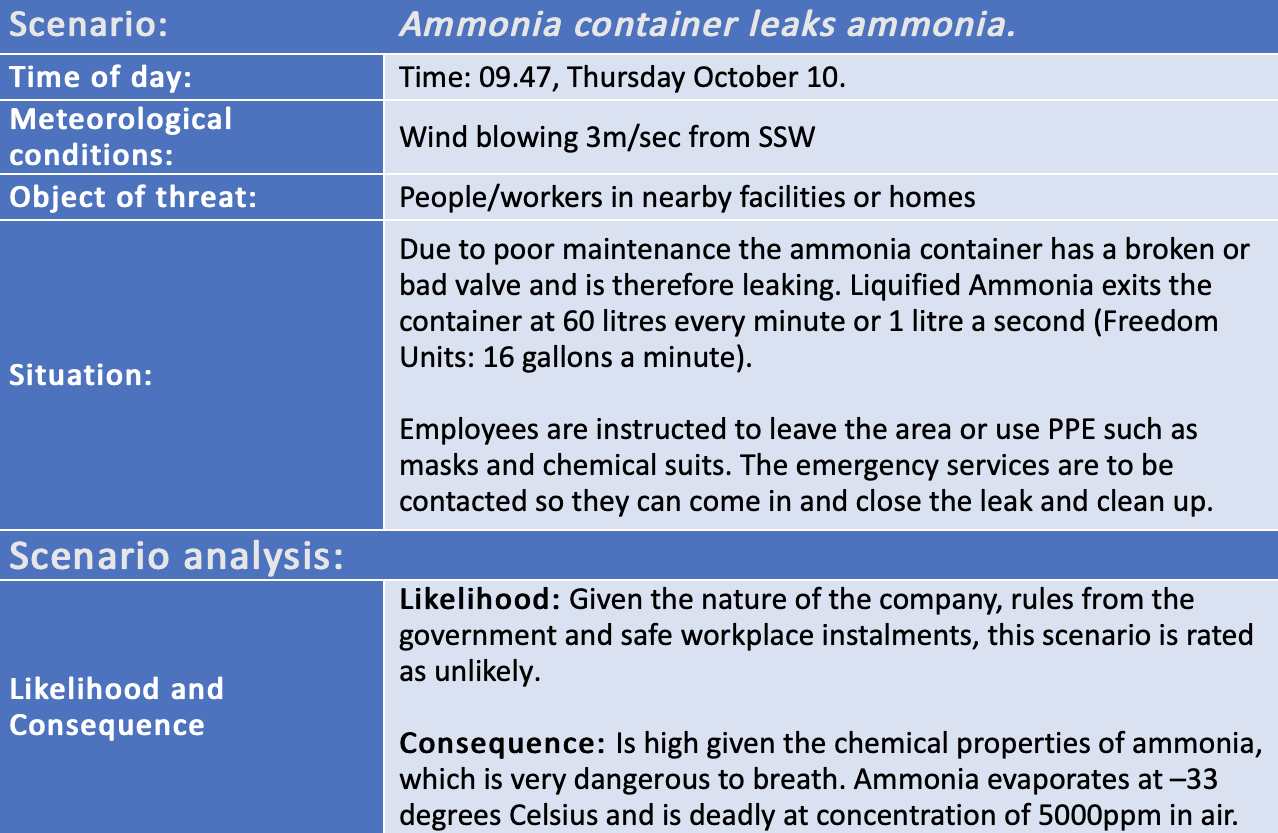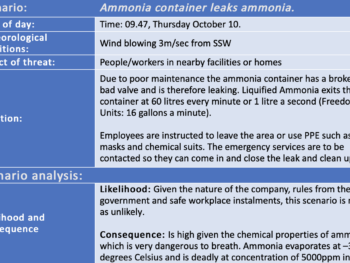A Scenario Analysis is a tool used to identify possible risks. Usually this tool is used in succession of a brainstorm where all possible risks are identified. After the most relevant or most commonly known risks are identified a Scenario Analysis will be performed. A Scenario Analysis is then followed by or used in combination with a risk matrix so that the identified and analysed risk can be “rated” accord-ing to whatever the organisation defines as their impact and likelihood descriptors.
How to use it
There is no definitive way to use this tool. You can think of your own way to use it or you can follow some general practices which are as follows:
- Define the Threat
- When does the treat occur?
- What are the meteorological conditions when the threat occurs?
- What is the object of the threat (worker(s), tool(s), heavy equipment, etc…)
- Describe the situation in as much detail as possible
- Then make an educated guess as to what the likelihood and consequence/impact of this scenario is
An example of a Scenario Analysis is given here:
In this scenario an ammonia container is leaking due to poor maintenance and the immediate threat is to employees in the facility and people in homes around the facility.

All these factors are, of course, dependent on your organisations main area of operations. The level of detail in these Scenarios are essential to a great threat/risk mitigation. The more you know about the operation procedures the greater detail you can describe the scenario in, and then it is easier to de-fine the risk and threats and therefore to mitigate them in some way.
With the example as it is right now, there are no definitions or descriptions of what unlikely is or what high consequence is. This is usually where risk matrix would be implemented, at the end of the first scenario analysis, where no mitigation measures have been implemented yet.
Pros:
- It is a simple and structured way of setting up risk scenarios and then discussing them and give them a rating.
- It is easy to fill out the details of the specific scenario.
- Based on the selected scenarios, it is possible to identify the consequences during the scenario.
- You can use the scenario analysis as a journaling tool to future reference.
Cons:
- It needs the right amount of detail to be both effective and not too cumbersome. Too much detail and it is unmanageable. Too little detail and it isn’t effective enough.
- It is only really practical for scenarios with a single threat (like the example above).
- It is partially dependent on a Risk Matrix (or similar) for maximum effectiveness.
Sources:
- (Danish only) Danish Emergency Management Association Håndbog for risikobaseret dimensionering.
- We are working on an international source…



